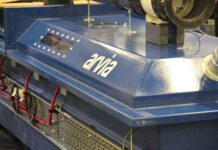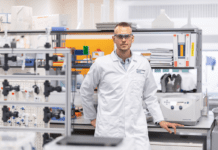AN MIT research team has been investigating an innovative way to mix seawater and river water together in order to generate enough power to sustain the Deer Island waste water treatment plant in Boston Harbour.
The research has been evaluating a method of power generation dubbed “pressure retarded osmosis” (PRO), which mixes two water streams of different salinity levels together to produce energy. According to a press release, a PRO system would collect river water and seawater on either side of a semi-permeable membrane. Through osmosis, less-salty river water would cross the system membrane into a pre-pressurized saltier stream – seawater – to be later shipped through a turbine to recover power.
Work has been underway to investigate whether these systems would be viable at the intersection between the river and the sea, according to MIT researcher Leonardo Banchik, who believes a PRO system could potentially power a coastal wastewater-treatment plant by combing treated wastewater with seawater.
In Boston Harbour, at the Deer Island wastewater treatment plant, where wastewater meets the sea, PRO could theoretically supply all of the power required for treatment, he suggested. He and fellow researchers found in their research that larger system membranes in PRO systems have the ability to produce more power, up to a certain extent; moreover, 95 percent of a system’s maximum power output can be created in half or less the size of maximum membrane area.
If membrane area sizes in PRO systems are reduced, the cost to build a power-generating PRO system would be lowered.







